A Hundred Years, a Hundred Chairs (百年百張經典椅) is an exhibit with legs: legs made of wood, steel tubing, aluminum, plastic, rattan, metal mesh, cardboard and even felt.
At the Xue Xue Institute until Aug. 21, A Hundred Years, a Hundred Chairs features pieces from the collection of Germany’s Vitra Design Museum, which focuses on furniture and interior design. The show gives design buffs in Taiwan a rare chance to see original chairs by some of Europe and North America’s most influential designers. Pieces in the exhibit were produced between 1898 and 1998 and include creations by Charles Rennie Mackintosh, Frank Lloyd Wright, Marcel Breuer, Charles and Ray Eames, Arne Jacobsen, Frank Gehry and Philippe Starck.
On a recent afternoon, visitors kneeled down to examine the construction of an Eames fiberglass rocker from the late 1940s or stood contemplating How High the Moon, an armchair constructed almost entirely from steel mesh by Japanese designer Shiro Kuramata in 1986.
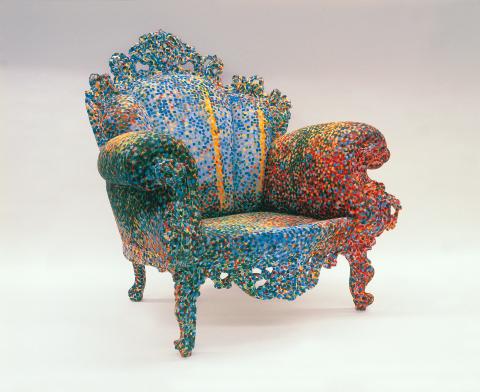
Photo COURTESY OF XUE XUE INSTITUTE
“Even if you don’t have a lot of money, a few chairs can really bring out the look of your home,” says Yili Ho (何怡俐), the director of exhibits at the Xue Xue Institute. “It doesn’t just appeal to people who are interested in interior design. Chairs also encompass industrial design and engineering.”
The exhibition has traveled to 12 countries and is carefully curated to give viewers a sense of how social, cultural and economic changes influence furniture design, Ho says.
“We wanted people to be able to see all the chairs at once and let them take their time examining the chairs up close,” she says of the exhibit’s open layout, which is arranged into nine sections by era and style.
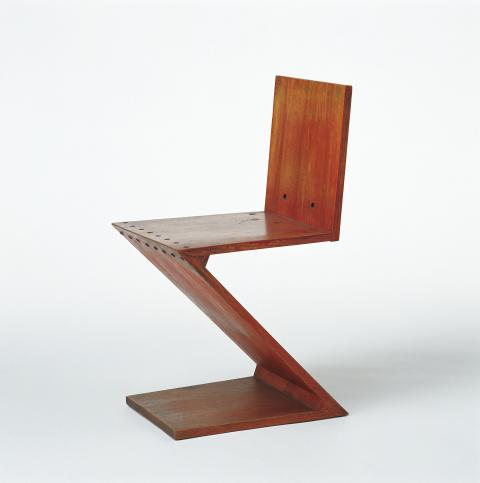
Photo COURTESY OF XUE XUE INSTITUTE
The first section focuses on wooden chairs built between 1898 and 1918, including an office chair created by Wright for the Larkin Administration Building in Buffalo, New York, and the adjustable-backed Sitzmaschine, which Josef Hoffman designed for patients at Vienna’s Sanatorium Purkersdorf.
Modular design and the then-revolutionary use of steel tubing in furniture construction are highlighted in the next section, which features several chairs by Bauhaus designers Marcel Breuer and Ludwig Mies van der Rohe. Gerrit Rietveld’s Zig Zag chair, which is made from just four pieces of wood held together by dovetail joints, accompanies other designs created in the decade leading up to World War II.
The next three sections examine the evolution of furniture styles after the war, when designers like the Eames brothers and Hans Wegner made simple but striking furniture with materials like molded plywood and fiberglass. As the economy improved, more luxurious creations began appearing, like the famous Eames lounge chair and ottoman, built from molded plywood and upholstered in black leather.
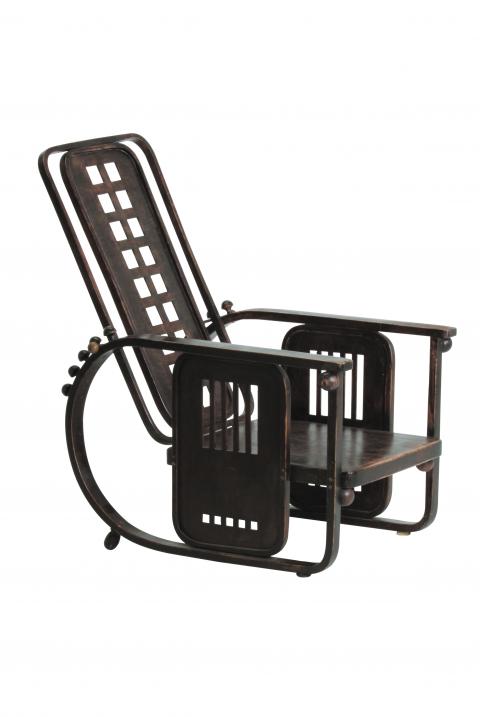
Photo COURTESY OF XUE XUE INSTITUTE
In the 1960s, pop art by Andy Warhol and Roy Lichtenstein showed its influence in playful pieces such as Eero Aarnio’s spherical Ball and Pastille chairs and Studio 65’s 1970 Bocca Sofa, which is also known as the “Marilyn Monroe sofa” for its resemblance to the movie star’s bright red lips. During the 1980s, designers like Javier Mariscal, Ron Arad and Andre Dubreuil sought to break down the boundaries between furniture and fine art with more conceptual creations.
“The chairs created during this time were more diverse in style. Designers were less concerned with ergonomics and usability than with deconstructing ideas about furniture design,” Ho says.
More recently, designers like Starck and Arad have focused on creating chairs from environmentally friendly materials that have silhouettes influenced by mid-century modernist design.
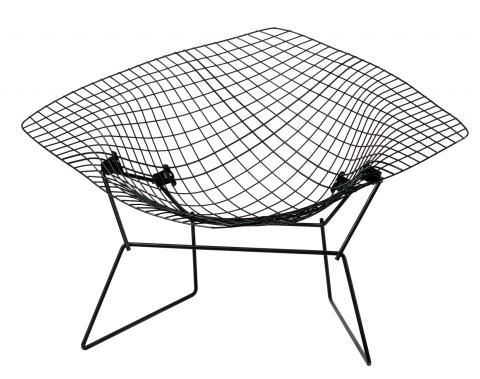
Photo COURTESY OF XUE XUE INSTITUTE
“They want to use resources and space as carefully as possible. You can see how contemporary designers use inspiration from earlier eras,” Ho says. “It’s not about recreating pieces, it’s about using them as a launching pad for new ideas.”
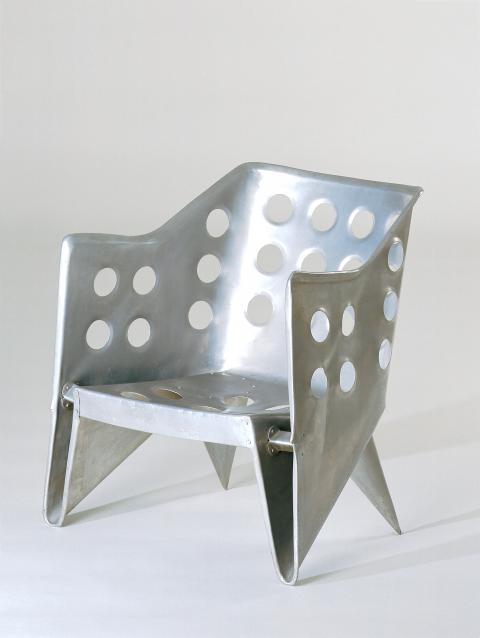
Photo COURTESY OF XUE XUE INSTITUTE

Cheng Ching-hsiang (鄭青祥) turned a small triangle of concrete jammed between two old shops into a cool little bar called 9dimension. In front of the shop, a steampunk-like structure was welded by himself to serve as a booth where he prepares cocktails. “Yancheng used to be just old people,” he says, “but now young people are coming and creating the New Yancheng.” Around the corner, Yu Hsiu-jao (饒毓琇), opened Tiny Cafe. True to its name, it is the size of a cupboard and serves cold-brewed coffee. “Small shops are so special and have personality,” she says, “people come to Yancheng to find such treasures.” She

In July of 1995, a group of local DJs began posting an event flyer around Taipei. It was cheaply photocopied and nearly all in English, with a hand-drawn map on the back and, on the front, a big red hand print alongside one prominent line of text, “Finally… THE PARTY.” The map led to a remote floodplain in Taipei County (now New Taipei City) just across the Tamsui River from Taipei. The organizers got permission from no one. They just drove up in a blue Taiwanese pickup truck, set up a generator, two speakers, two turntables and a mixer. They
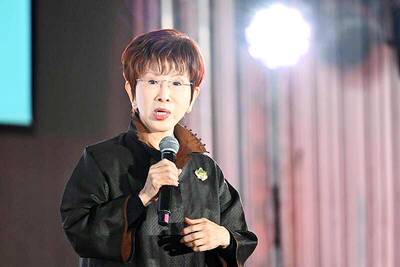
Former Chinese Nationalist Party (KMT) chairwoman Hung Hsiu-chu’s (洪秀柱) attendance at the Chinese Communist Party’s (CPP) “Chinese People’s War of Resistance Against Japanese Aggression and the World Anti-Fascist War” parade in Beijing is infuriating, embarrassing and insulting to nearly everyone in Taiwan, and Taiwan’s friends and allies. She is also ripping off bandages and pouring salt into old wounds. In the process she managed to tie both the KMT and the Democratic Progressive Party (DPP) into uncomfortable knots. The KMT continues to honor their heroic fighters, who defended China against the invading Japanese Empire, which inflicted unimaginable horrors on the
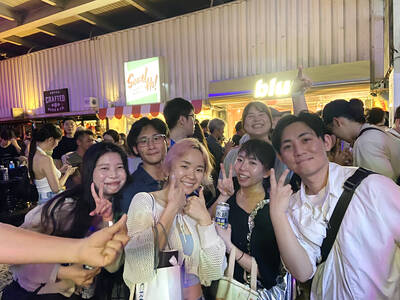
Hannah Liao (廖宸萱) recalls the harassment she experienced on dating apps, an experience that left her frightened and disgusted. “I’ve tried some voice-based dating apps,” the 30-year-old says. “Right away, some guys would say things like, ‘Wanna talk dirty?’ or ‘Wanna suck my d**k?’” she says. Liao’s story is not unique. Ministry of Health and Welfare statistics show a more than 50 percent rise in sexual assault cases related to online encounters over the past five years. In 2023 alone, women comprised 7,698 of the 9,413 reported victims. Faced with a dating landscape that can feel more predatory than promising, many in